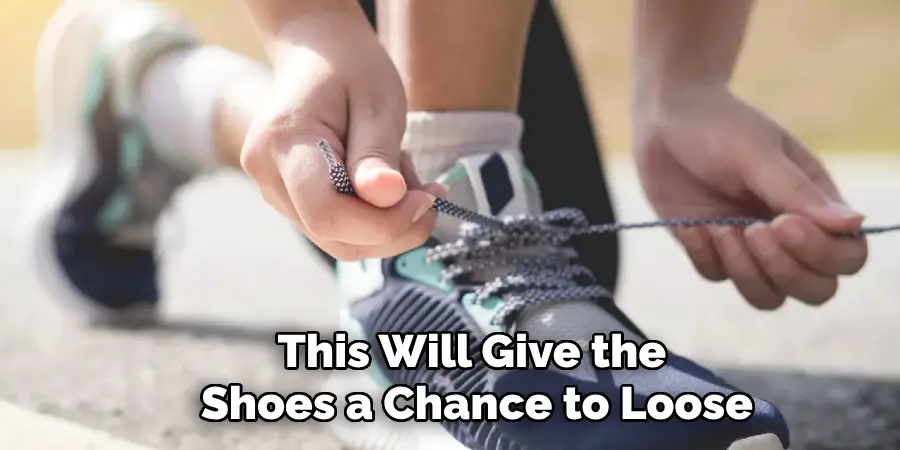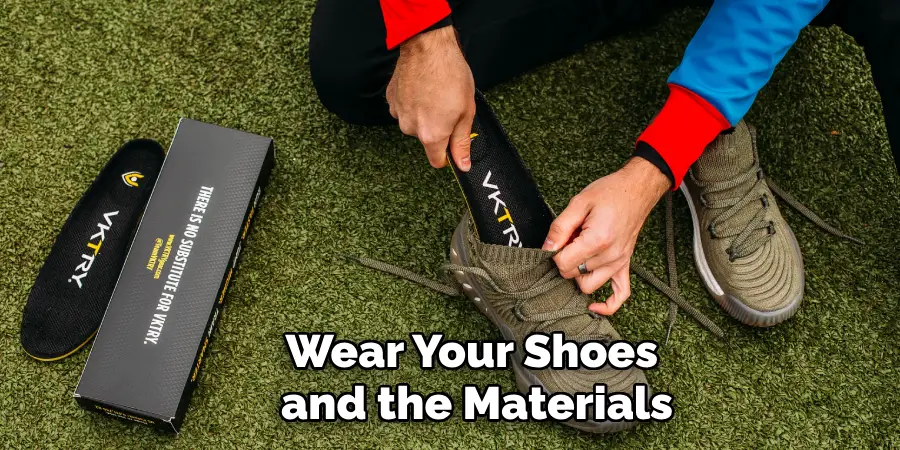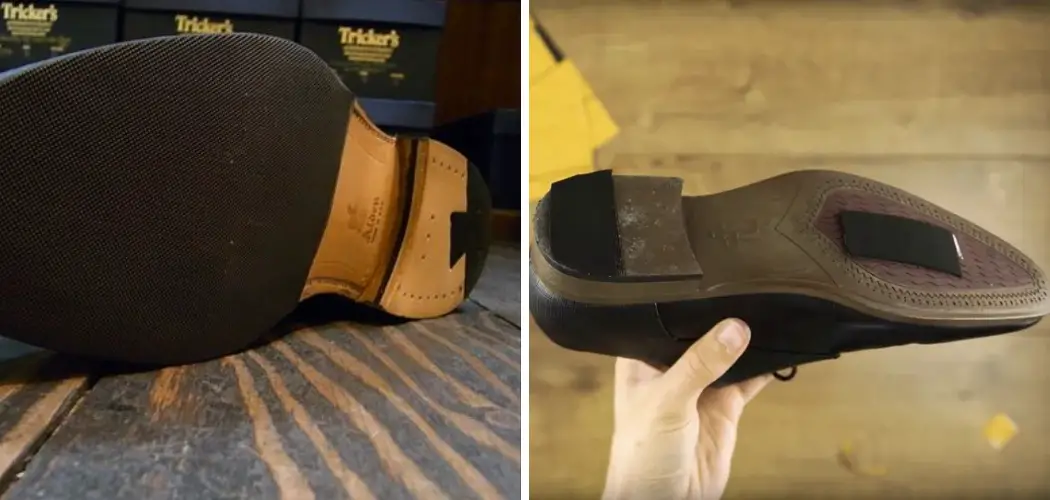Noise from shoes can be an annoying and sometimes embarrassing issue, whether it’s the squeaky sound of new leather or the clack of hard soles on tile floors. Thankfully, there are several strategies that can help reduce or eliminate these unwanted sounds.
In this guide on how to make shoes less noisy, we’ll explore a variety of practical tips and techniques to make your shoes less noisy, allowing you to move about with greater confidence and ease.

Why Do Shoes Make Noise?
Before we dive into solutions, it’s important to understand why shoes make noise in the first place. There can be several reasons for noisy shoes, including:
Material:
Certain materials, such as leather or plastic, can create more friction and, therefore, more noise when rubbed against surfaces. This is especially true for new shoes, as the materials may not have been broken in yet.
Moisture:
Humidity or dampness can also contribute to noisy shoes. Moisture can cause the material to stick together and create more friction, resulting in squeaky sounds.
Poor fit:
Ill-fitting shoes can also be a culprit for noise. If your shoes are too loose or too tight, they may rub against your feet or each other, causing unwanted sounds.
Now that we understand some of the reasons behind noisy shoes let’s explore how to make them less noisy.
8 Step-by-step Guidelines on How to Make Shoes Less Noisy
Step 1: Identify the Source of Noise
The first step in reducing shoe noise is to pinpoint where the sound is coming from. Begin by walking on different surfaces such as carpet, tile, and hardwood to see if the noise persists or changes. Listen carefully to determine if the sound originates at the heel, sole, or another part of the shoe.
Once you’ve identified the noisy area, you can then choose the most appropriate method to address the issue. For example, if the noise is coming from the heel, you might consider options like heel grips or extra padding to reduce friction. Identifying the exact source of the noise will make it easier to apply targeted solutions effectively.

Step 2: Use Talcum Powder or Baby Powder
If the source of the noise is internal, such as the insole rubbing against the shoe, using talcum powder or baby powder can be an effective solution. First, remove the insole from your shoe if possible. Sprinkle a small amount of talcum powder or baby powder inside the shoe, focusing on the areas where the insole makes contact with the shoe’s interior. Be sure to distribute the powder evenly to cover all potential friction points.
After applying the powder, place the insole back into the shoe and walk around to see if the noise has been reduced. The powder acts as a dry lubricant, minimizing friction between the insole and the interior of the shoe, thus helping to eliminate squeaky sounds. Repeat this process as needed to maintain a quiet and comfortable experience.
Step 3: Apply Petroleum Jelly
Another solution for reducing internal shoe noise is to apply petroleum jelly. Similar to talcum powder, it acts as a lubricant and reduces friction between the insole and shoe. Simply remove the insole from the shoe, apply a small amount of petroleum jelly to the areas that make contact with the shoe’s interior, and then place the insole back into the shoe. Test by walking around to see if there is less noise.
It’s worth noting that petroleum jelly can be a bit messier than talcum powder, so use this method with caution and avoid over-applying to prevent staining or discomfort.
Step 4: Try Silicone Gel Inserts
Silicone gel inserts are another useful tool in reducing shoe noise. These inserts act as a cushion between the sole of your foot and the shoe, reducing friction and noise. They can easily be placed inside shoes, including high heels, flats, and sneakers.
Choose silicone gel inserts that fit comfortably in your shoes without shifting or slipping while walking. Not only do they help reduce noise, but they also provide additional comfort and support for your feet.

Step 5: Use Adhesive Felt
Adhesive felt is a soft and flexible material that can be placed on the inside of your shoes to reduce noise. The felt helps to absorb sound and minimize friction, making it an effective solution for noisy shoes.
To use adhesive felt, cut out small pieces to fit in areas where there is potential for rubbing or squeaking. For example, you can place it on the heel or toe of your shoe to help eliminate noise from those areas. Adhere to the felt securely to ensure it stays in place while walking.
Step 6: Add Extra Padding
Adding extra padding, such as foam or gel inserts, can also help reduce shoe noise. This method works especially well for high heels, where the additional padding can absorb sound and minimize friction between the shoe and your foot.
Inserts are available in various thicknesses and materials, so experiment to find what works best for your specific shoes. Be sure to properly position the inserts inside your shoes to avoid discomfort or blisters.
Step 7: Break in Your Shoes
In some cases, simply breaking in your shoes can reduce noise. This applies mainly to new shoes made with stiffer materials like leather or plastic that need time to soften and mold to your feet.
Wear them around the house for short periods of time before venturing out in them for extended periods. This will give the shoes a chance to loosen up and conform to your feet, reducing the potential for noise.
Step 8: Take Your Shoes to a Professional
If all else fails, consider taking your shoes to a professional cobbler. They can assess the issue and make any necessary repairs or adjustments to fix the problem. This may include replacing worn out soles or adding rubber padding to reduce noise.
You can also ask for their recommendations on how to prevent or minimize noise in the future based on the type of shoes you have.

Tips for Making Shoes Less Noisy
Apply Baby Powder or Talcum Powder:
Sprinkling a small amount of baby powder or talcum powder inside your shoes can reduce noise by acting as a dry lubricant and minimizing friction.
Use Silicone Gel Inserts:
Silicone gel inserts not only help reduce noise but also provide added comfort and support for your feet. They can easily be placed inside different types of shoes, including high heels, flats, and sneakers.
Try Adhesive Felt:
Adhesive felt is another useful material that can absorb sound and minimize friction in shoes. Cut out small pieces to fit in areas where there is potential for rubbing or squeaking.
Break-in Your Shoes:
Give new shoes made with stiffer materials time to soften and conform to your feet by wearing them around the house for short periods of time before extended wear.
Visit a Professional Cobbler:
If all else fails, take your shoes to a professional cobbler who can assess and fix any issues that are causing noise. They may also provide helpful tips for preventing or minimizing noise in the future.
By following these steps on how to make shoes less noisy and using some simple solutions, you can say goodbye to noisy shoes and enjoy a quiet and comfortable walking experience. Remember to regularly check and maintain your shoes to prevent excessive noise from developing in the future.
Frequently Asked Questions
Q: Is It Normal for Shoes to Make Noise When Walking?
A: It is not uncommon for shoes to make noise, especially with certain types of shoes or materials. However, excessive noise can be uncomfortable and disruptive. It is important to address the issue to ensure a comfortable and quiet walking experience.
Q: Can I Use These Methods on All Types of Shoes?
A: Yes, these methods can be used on most types of shoes, including high heels, flats, sneakers, and more. Be sure to test on a small area first before applying it to the entire shoe.
Q: How Often Should I Repeat These Steps?
A: The frequency at which you need to apply these steps will depend on how often you wear your shoes and the materials they are made of. Check for noise regularly and reapply solutions as needed to maintain a quiet experience.

Conclusion
Noisy shoes can be a source of annoyance and discomfort, disrupting your walking experience and drawing unwanted attention. Fortunately, with the various methods and tips outlined in this guide, you can effectively address and reduce shoe noise, ensuring a more pleasant and quieter stride. Whether it’s applying baby powder or talcum powder as a dry lubricant, using silicone gel inserts for added comfort, or seeking professional help from a cobbler, there are numerous solutions available to suit different types of shoes and personal preferences.
Remember to regularly maintain and check your shoes to prevent excessive noise from developing. By taking these proactive steps on how to make shoes less noisy, you can enjoy a more comfortable and serene walking experience, free from the disruptions of noisy footwear.

